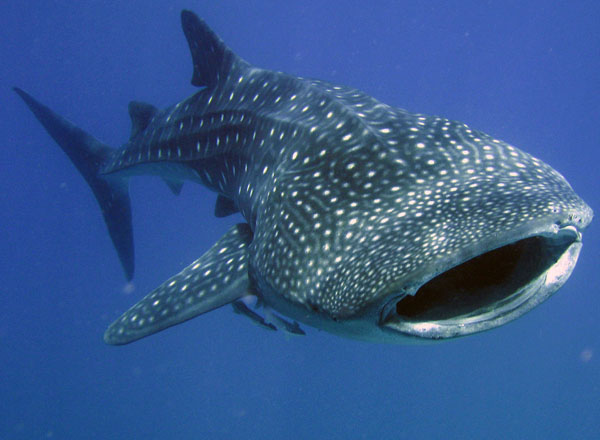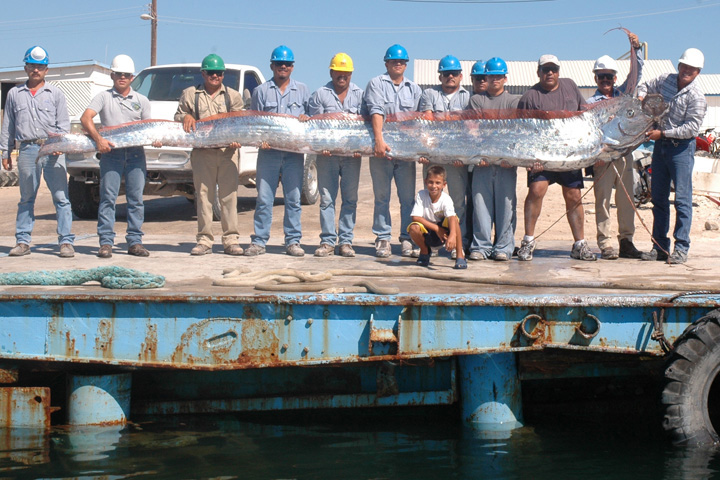1 part undergraduate research,
1 part social media outreach,
and 4 parts massive ocean animals.

The world’s oceans are dominated by some of the largest creatures on earth—oarfish, whale sharks, great white sharks, leatherback turtles, blue whales, giant squid, colossal squid, and many more. Given their size, many of these organisms are surprisingly elusive. These behemoths lead predominantly solitary lives in the open and often deep oceans far from human sight.
We know surprisingly little about the maximum sizes these animals reach. For example, an online Whale Shark FAQ places the upper estimate of length at 21.4 meters (70.21 feet). A YouTube video claims that a filmed individual is 18.29 meters (60 feet). The conservation organization Oceana suggests the upper size is 20 meters (65.6 feet). Compare this to reports from the scientific literature. Martin (2007) states, “1 of only 10 sharks routinely attain lengths of more than four metres [13.12 feet],” and Coleman ten years prior, “Most specimens reported in the literature are between 4 and 10 m [32.8 feet].” Obviously there is disagreement, even in the scientific literature.
Not knowing accurate maximum sizes and how much size varies with age and geography inhibits our understanding of these animals and how to conserve them. From accurate measurements of size we can infer much about an organism. In some aspects this is basic physics. The mass of an object dictates friction, acceleration, force, and so on. The metabolism of an organism, telling us how much oxygen and carbon an animal consumes, is a function of size as well. Indeed, we have precise mathematical equations, based on studies of closely related species that can tell what the metabolism of such giants would be. Knowing whether a whale shark is 10 tons, 15 tons, or 20 tons lets us know whether a whale shark uses 868, or 1176, or 1,460 light bulbs worth of energy every day. It doesn’t stop with metabolism either. In spite of errors and exceptions, heart rate, speed, growth, lifespan, population size, lifetime reproductive output, range of migration, and many more things can all be estimated from body size. This provides a substantial advantage when trying to understand organisms we know virtually nothing about.
In the fall semester of 2013 a team of undergraduates together and I engaged in a new kind of independent study course at Duke University–one engaging in research and outreach. The project was 1 part undergraduate research, 1 part social media outreach, and 4 parts massive ocean animals.
The team will explored and collected data on the body size of various ocean giants ranging from the giant squid and blue whale to the oarfish and leatherback turtle. Each student is focused on 1-2 specific animals and collecting data from scientific literature, contacts at museums, public media, fisheries services, and other archival information. The quantitative data was placed in a database and analyzed for measurement bias, age patterns, geographic variation, temporal variation, anthropogenic impacts on size, sex differences, etc. Eventually this database will be open access to all!
You can read the student’s blog entries and see the team at the Story of Size website.
